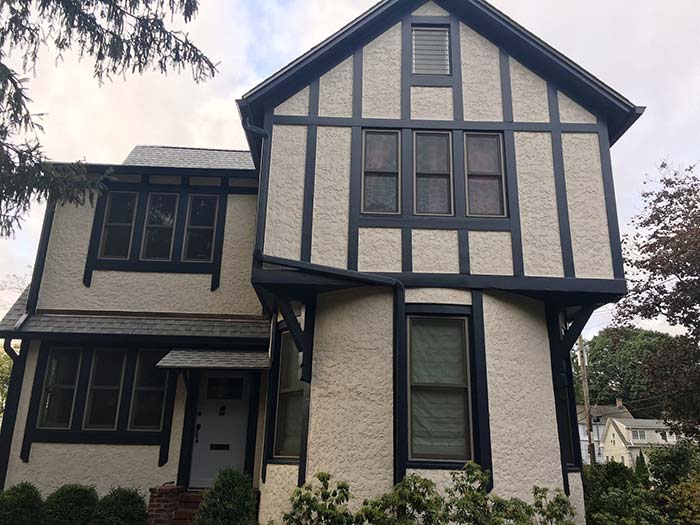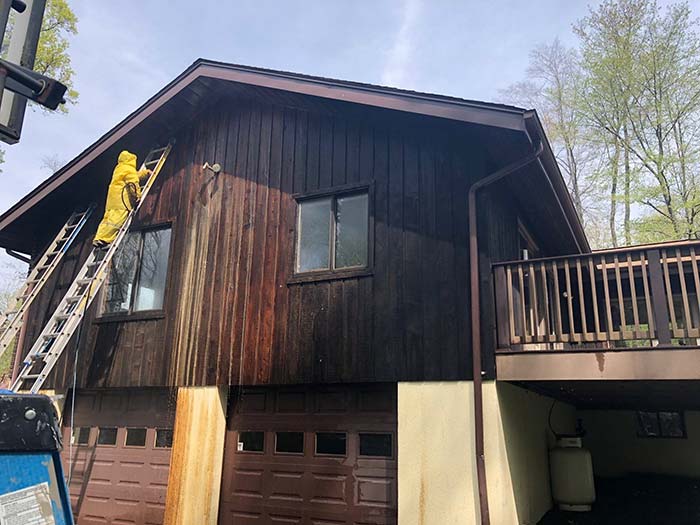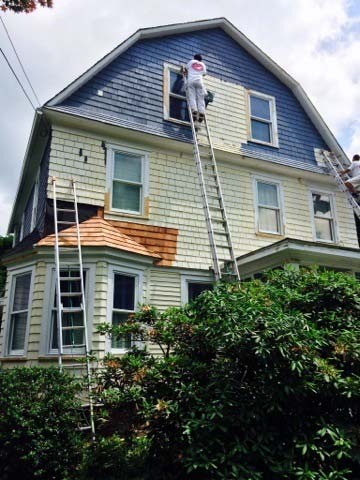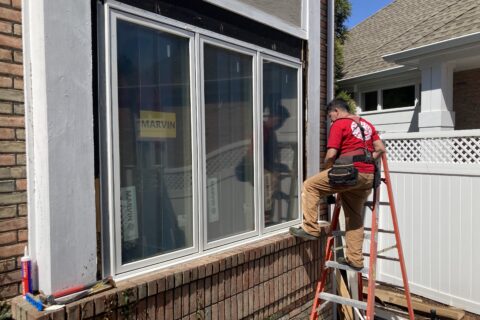Extend the Life of Your Exterior Paint, It’s All in the Prep

Are you looking for your exterior paint job to last longer? Its all in the preparation. That single word unlocks the mystery of why paint jobs by pros last and others may not. By some accounts, 80% of the work in any paint job is the prep.
6 Key Steps To Perfect Preparation
1. Fix Indoor Moisture Problems That Lead to Outdoor Paint Trouble
Repair roof leaks and soggy basements. Vent kitchens and baths to the outside. Moisture enters a house as liquid, but it leaves as a vapor that lifts exterior paint when it exits the wall outside poorly vented rooms.

2. Repair Damaged Surfaces
Don’t paint over wood affected by rot or insects or gouged by careless ladder placement. Replace damaged wood or repair it. Dig out rusty fasteners. Water running over a rust blister transfers the oxides to the paint, staining it.

3. Clean Siding and Trim
Dirt is slippery, and paint won’t stick to it; you’ve got to remove dirt, mildew, cobwebs, and greasy gunk. Don’t tackle everything in one cleaning. Instead, proceed in two stages. First, professional painters like the benefits of power washing for this step. However, when you power wash, go easy. Be careful not to damage the siding and trim.

4. Scrape and Sand
Remove damaged paint and use sandpaper to feather the rough edges left behind. Sharp edges can create thin, weak areas in the new paint. Brush away any dust created and rinse the siding and trim gently when done.
5. Prime if Necessary
Primer is to the topcoat what the foundation is to your house. Areas scraped to bare wood need a layer of primer, as do spots that have hairline cracks but are otherwise sound. Prime the entire house if it needed extensive scraping.

6. Apply Paint Correctly
Paint needs to be applied at the right thickness, about 4 to 5 mils (0.004 to 0.005 in.) when wet–or the thickness of a sheet of copier paper. Too thin, and the dried paint will be weak. Too thick, and it will sag and crack. Finally, don’t apply paint in strong direct sunlight or high wind, which can make the water or petroleum solvents evaporate out of the paint too quickly. This does two things. It can reduce the paint’s ability to flow out and level as it should. It can also weaken the bond the paint molecules make with each other and with the substrate.
If you’re planning an exterior painting project this fall, call Armonk painters now for a free estimate. It would be our pleasure to serve you at Korth & Shannahan Painting & Carpentry call 914-238-5388.

